STREAM BUFFER FENCING
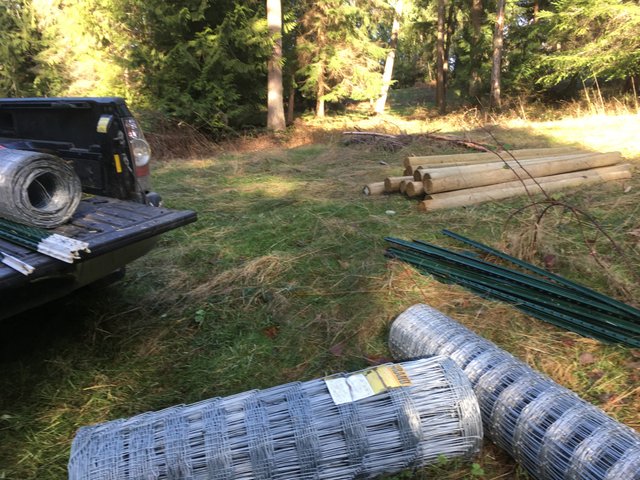
The fencing is on here at Leafhopper Farm! After receiving a King Conservation District cost share grant and mapping out stream buffers, the fencing began. I’ll be installing 635′ of woven wire stock fence at roughly 150′ stream setback. This will go above and beyond in setting up strong ground water enhancement for Weiss Creek, our “2S” 2nd Class Saminoid (salmon bearing) water feature.
Right now, Leafhopper is not running large numbers of livestock on the landscape, but as the goat herd expands and sheep are reincorporated into our rotational grazing system, we’ll need to keep them out of our sensitive riparian landscapes which are concentrated along the creek’s banks. If the livestock were to graze down into the stream buffer, they would be defecating too close to the water and polluting the creek. Their browsing would eventually out compete many of the native plants, which cannot survive continual grazing systems.
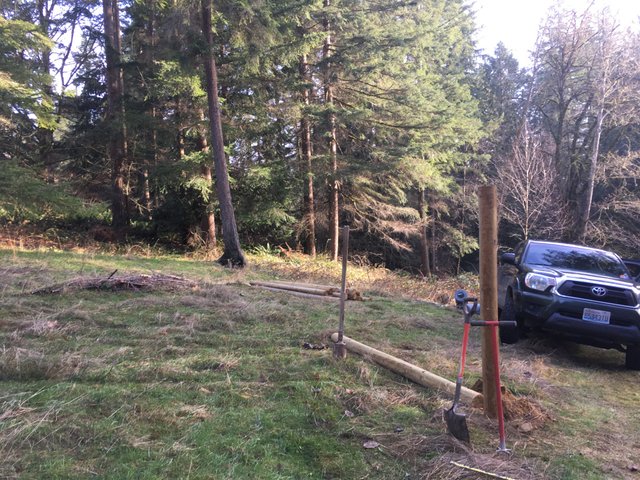
On the landscape, these new lines of fencing will greatly change the flow of energy on the property. Gates and wire mesh walls seem a little intrusive, but ultimately subscribe to county regulations regarding proper stream buffer construction for active livestock systems of agriculture. I’m glad to protect our native environment and, within the fenced buffers, cultivate native plant food and medicine for use on the farm.
Up till now, the rotational grazing systems at Leafhopper Farm have worked perfectly to remove blackberry and bring back the visual lines around the property, inviting back the more sensitive native plants who would otherwise be engulfed by bramble. Below is a shot looking south from the east fence line towards Weiss Creek and the wonderful wood and steel bridge put in by Wild Fish Conservancy. Just beyond that bridge, you can see one of the goats standing in the grassy field. The lush green growth is very much alive, even at the darkest time of year.
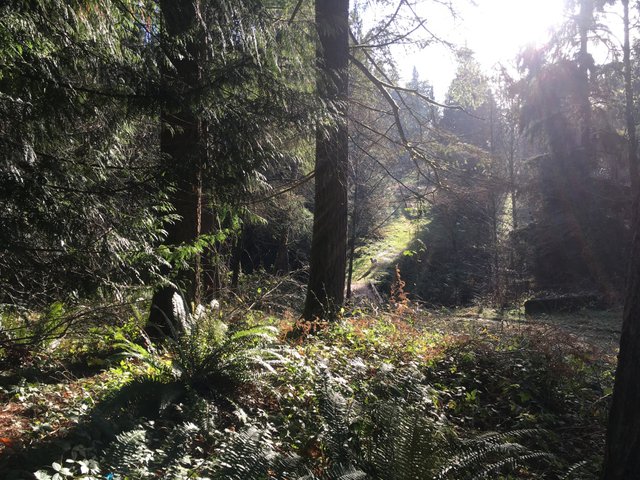
The grazing systems of Leafhopper have been very beneficial for the rehabilitation of the under-story, including the reduction in invasive blackberry bramble, and the spreading of good nutrients back into the soil by livestock. Before the farm was in holistic restoration, there were previous agricultural management practices going all the way back to the 1960s when the land was clear-cut for a second time and then settled by the family, which homesteaded for two generations.
While setting the new fence posts, I got a chance to see the history of fencing on the farm. The original fencing used raw, split red cedar posts. When the land was surveyed in the 80s, the red t-posts went in as official boundary markers. What I looked at next were the old, porcelain fence insulators of early hot wire systems. Neighbors tell me the previous land owners ran pigs on the clear cut part of their land first, then a mix of cows and horses. The porcelain insulators are low on the fence posts, and look to have been only one stand of wire’s worth of insulation; all you need for a smart pig operation. The large red plastic insulators are for the 90s, and are set at a place of the posts at just the right height for cows and horses.
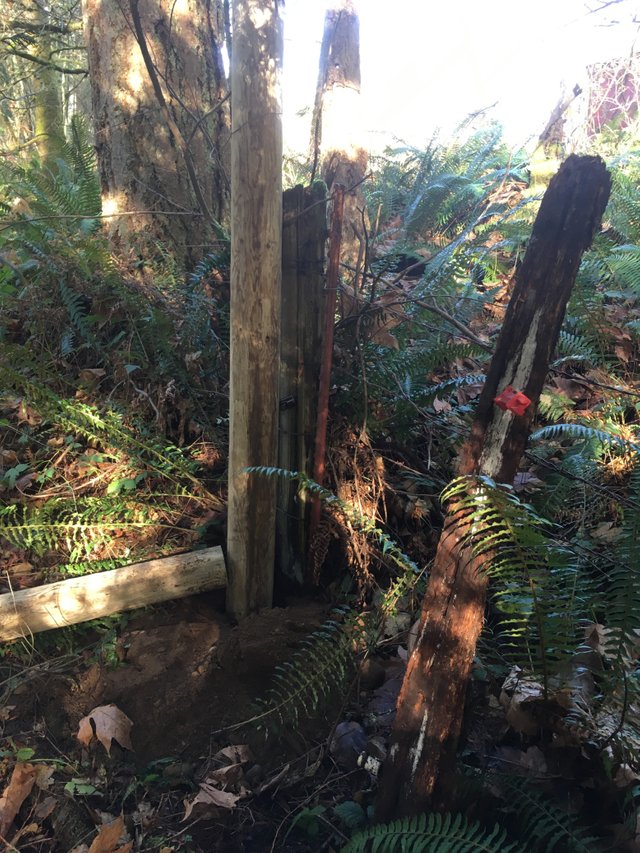
Now there is a new post in the ground on this fence line. It’s a treated fir post, and it will be part of an “H” brace for the stream buffer cross fencing. This is the new ecological chapter for this landscape, and a step in the direction of restoration. I’ll continue to honor the agricultural energy cultivating in this soil, but with more intention of regeneration, rather than taking without giving.
The shift is happening well beyond these fences. I would like to think I am part of a generation which can see the need for restorative stewardship of place. Our landscape has seen great change in the past century, especially here in The Pacific Northwest. Leafhopper Farm stands at the edge of that drastically changing landscape, as settlement continued to demand space and resources, rather than reaching further into the natural world, expecting limitless availability, we’ve reached a tipping point in the evolution of mankind. In this moment, the transition from consumption to restoration must happen if we are to survive as a species.
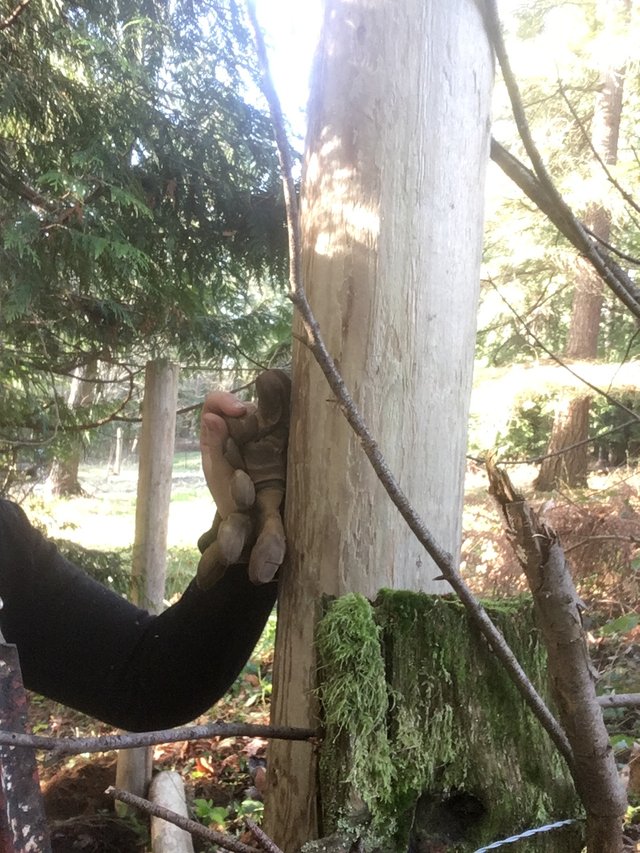
This fence is a symbol of Leafhopper Farm’s commitment to good stewardship of the land, and nurturing the landscape knowing our outlook for the future of this farm is regenerative and bright.
Liz Crain
@leafhopperfarm

To learn more about Leafhopper Farm visit us at:
LeafhopperFarm.com, YouTube, Twitter & Minds
That is a lot of work right there. Best of luck to you in 2018. 🐓🐓
Happy New Year! This article has been included in the most recent issue of the Weekly Homesteading Newsletter! Please check it out if you have the time! Thank you!
Your post has been discovered by @livesustainably I manage the#livesustainably tag.
@Livesustainably promotes and curates content that encourages and educates others in living sustainably.
At this time, as it is a new tag I am looking in in other channels. In the future you should post with the livesustainably tag so that you can get upvotes and curation from me. To find out more see my introductory post.
Nice post
Congratulations! This post has been upvoted from the communal account, @minnowsupport, by dudebro from the Minnow Support Project. It's a witness project run by aggroed, ausbitbank, teamsteem, theprophet0, someguy123, neoxian, followbtcnews/crimsonclad, and netuoso. The goal is to help Steemit grow by supporting Minnows and creating a social network. Please find us in the Peace, Abundance, and Liberty Network (PALnet) Discord Channel. It's a completely public and open space to all members of the Steemit community who voluntarily choose to be there.
If you would like to delegate to the Minnow Support Project you can do so by clicking on the following links: 50SP, 100SP, 250SP, 500SP, 1000SP, 5000SP. Be sure to leave at least 50SP undelegated on your account.